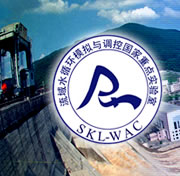《水文学杂志》刊登“利用二维水质模型对杜古路易水库(帕拉州,巴西)的养鱼业的影响评估研究”
作者: Ricardo Deus , David Brito, Marcos Mateus, Isabella Kenov, Adalgiza Fornaro, Ramiro Neves, C.N. Alves
期刊:《水文学杂志》,2013年4月22日,487期,1-12页
关键字:模型;水库富营养化;CE-QUAL-W2;水质;水产养殖;管理
摘要:位于巴西帕拉州的杜古路易水库地处巴西最大的洪泛区之一,当地政府将其作为试点项目,评价它的水产养殖的可行性。本文研究的主要目的是利用实测数据和模型模拟相结合,评估养鱼业对水库水质的影响。本研究采用CE-QUAL-W2模型用于模拟水库的水动力学和水质特征,该模型可以水库主要水质指标的水平和垂直梯度及其时序变化趋势。本文采用2007年-2011年5年间的温度、硝酸盐、氨、磷、总悬浮物、溶解氧以及叶绿素a等实测数据用于模型的率定和校验通过率定后,模型可用于模拟水库养鱼业采取的各种管理措施对水库水质的影响。模拟结果显示,2007年到2011年间水库磷总量增加了30%,其中(2008年到2011年至少增加了10%),单独选择磷总量作为水质评价指标,则水库的营养状态从贫营养状态转变为中等营养水平。然而,如果我们将叶绿素a作为评价指标则水库营养状态未见显著变化,尽管磷负荷增加到100%,但叶绿素a的浓度依然小于4ug/L,处于贫营养状态。模型结果表明,叶绿素a更适宜作为评价水库富营养化水平的关键性指标,因为水体内营养物质超标不一定会导致水生态系统初级生产力的显著提升。
Impact evaluation of a pisciculture in the Tucuruí reservoir (Pará, Brazil) using a two-dimensional water quality model
Authors: Ricardo Deus , David Brito, Marcos Mateus, Isabella Kenov, Adalgiza Fornaro, Ramiro Neves, C.N. Alves
Journal: Journal of Hydrology,Volume 487, 22 April 2013, Pages 1–12
Abstract: The Tucuruí reservoir, Pará State, Brazil, has one of the largest flooded areas in Brazil and its viability for aquaculture is being evaluated by local government in pilot projects. In this context, the purpose of this study is to assess the impact of a pisciculture in the water quality of the reservoir, by combining field data with model simulations. Hydrodynamics and water quality was modeled using CE-QUAL-W2. The model was validated using about 5 years of field data of temperature, nitrate, ammonia, phosphorus, total suspended solids (TSSs), dissolved oxygen and chlorophyll a. The model was able to reproduce horizontal and vertical gradients and their temporal variability. After validation, the model was used to simulate the response of water quality to various management scenarios of the pisciculture. Results show that solely based on phosphorus index, an increase of 30% occurs from 2007 to 2011, and at least 10% from 2008 to 2011. Based on this, the system tends to change its trophic state from oligotrophic to mesotrophic. However, if we consider chlorophyll a (Chla) as an indicator, no change in the trophic state is observed, since even with a 100% increase of the phosphorus load, the concentration of Chla remains oligotrophic (<4 μg/L) during the simulated period. Thus, the model results suggest that Chla should be used as the key indicator to assess the trophic state of the system, since the nutrients may be in excess in the environment without promoting primary production.
Keywords:Modeling; Reservoir eutrophication; CE-QUAL-W2; Water quality; Aquaculture; Management
文献来源:http://www.sciencedirect.com/science/article/pii/S0022169413000681
翻译:王丽婷; 审核:刘淼

